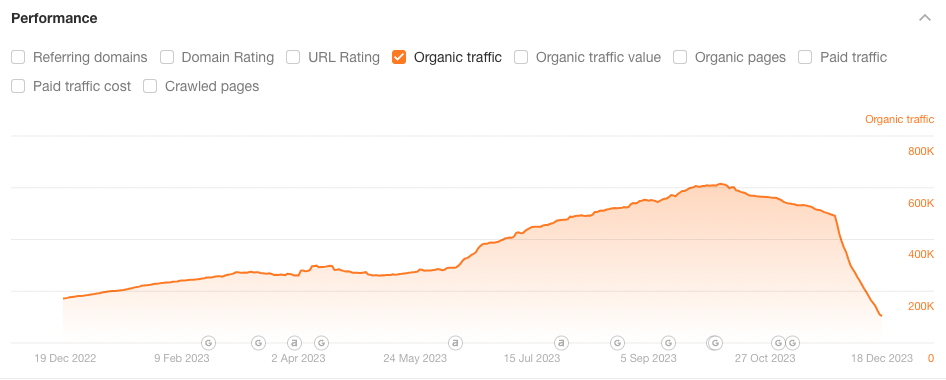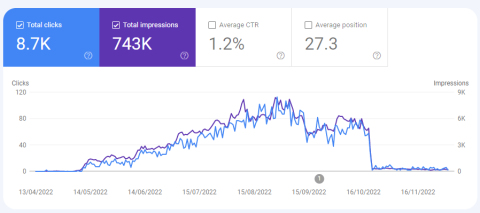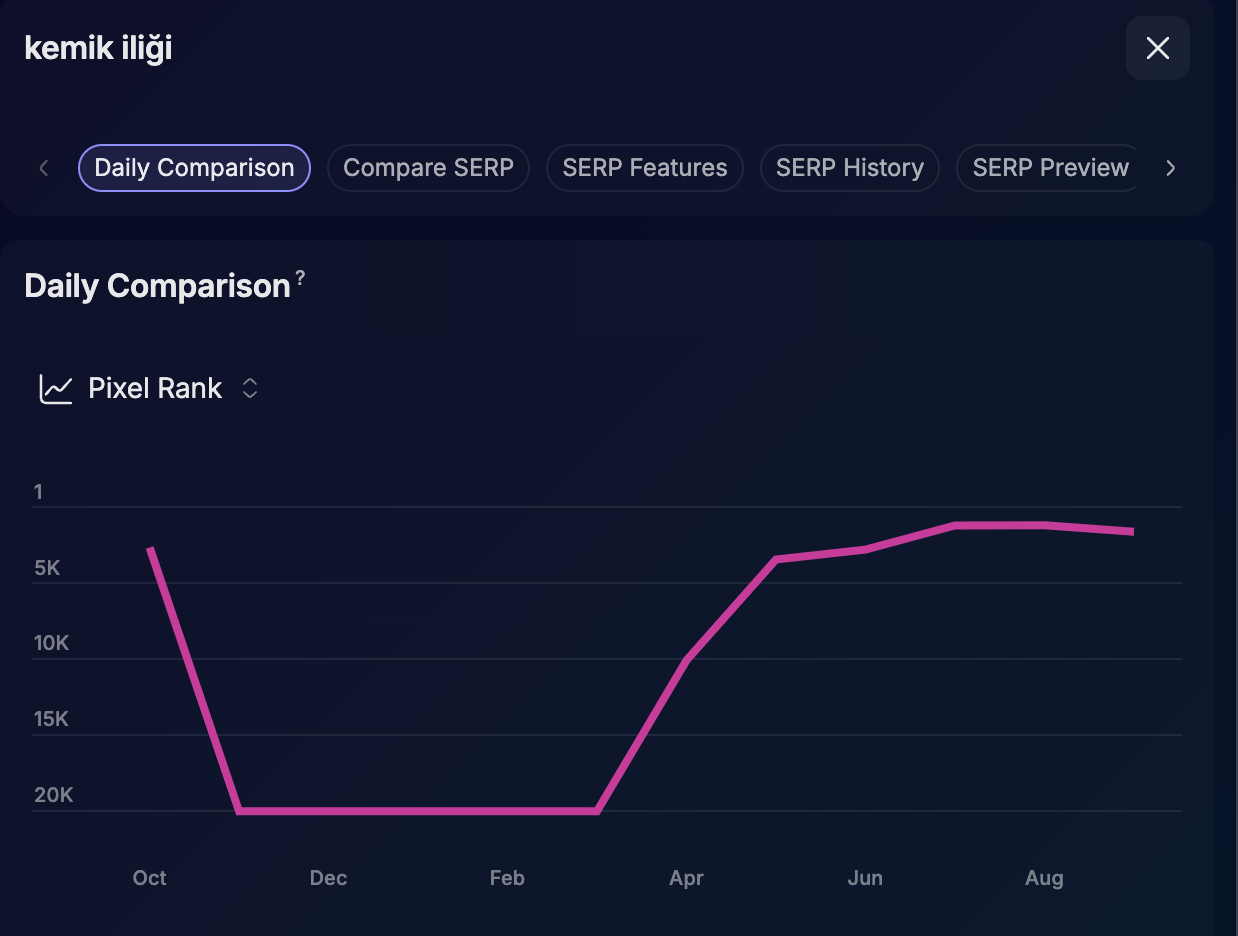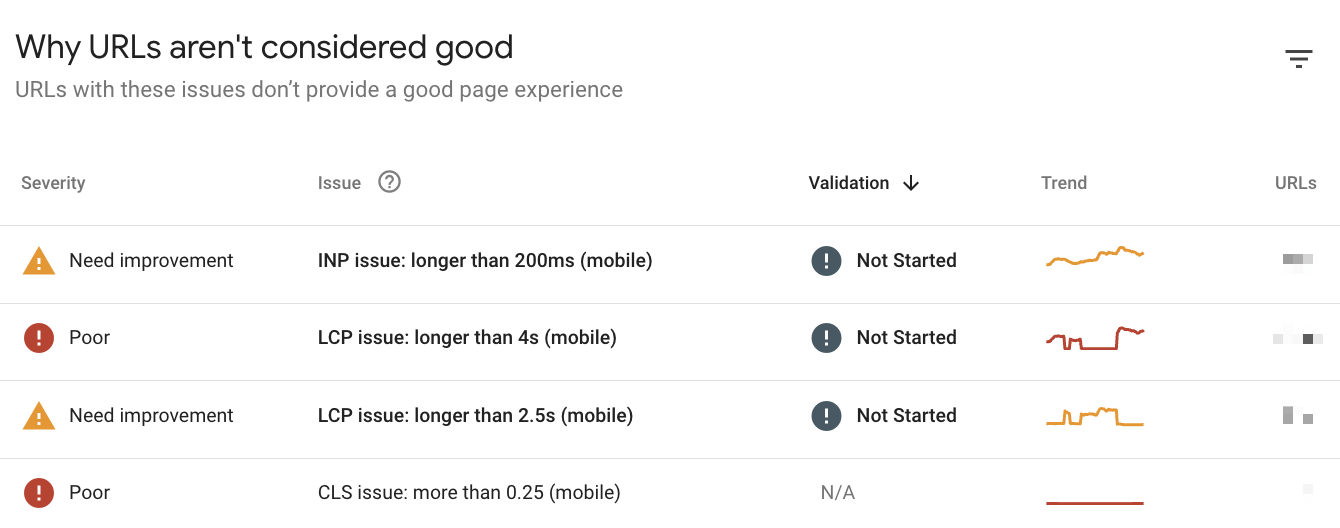2025 SEO Trends
The world of SEO evolves every year with ever-changing algorithms and shifting user expectations. In 2025, the focus extends beyond search engines to embrace user experience-driven approaches. In this blog post, we've compiled the most up-to-date SEO trends, brought to you by the diverse perspectives of our expert team.
Our topics range from producing quality content and meeting EEAT standards to analyzing keyword intent—the key to understanding user behavior. We also delve into the impact of AI on SEO strategies, zero-click searches, the significance of server response time, and the critical role of Core Web Vitals in site performance.
Let’s explore all these topics and more that are shaping the SEO landscape of 2025!
Quality Content and EEAT

Developments in artificial intelligence in the last few years have had a significant impact on the content generation behavior of websites. In the past, a significant portion of the content produced by humans for research or experiences has been replaced by artificial intelligence with the increasing use of LLMs such as ChatGPT. “Quality” content created by AI within seconds has become competitive with humans in search results. This rapid transformation has caused search engines to reconsider the way they evaluate content quality. The 4 basic criteria known as EEAT (Experience, Expertise, Authoritativeness, Trustworthiness), which Google uses to evaluate content quality, have come to the fore again with the increase in artificial intelligence content.
And why is that?
We can focus on the term “experience”, which was added in 2022, as the main reason why the concept of EEAT is back on the agenda and will probably make a name for itself in 2025. When a user who wants to go to Paris and is researching about it searches for “Where to go in Paris?”, he/she wants to encounter content about real experiences, probably sincere and realistic content, even real photos. They will most likely find this content on a travel blog. Therefore, the “experience” here is so valuable that it is difficult for AI content to compete with it.

Does this mean that AI-generated content is bad? Of course not. Google has an algorithm to provide the most accurate results to the user. So if the user needs a quick and concise list, AI-generated content may be more comprehensive and satisfying. This shows that we shouldn't resent AI content.
Artificial intelligence can be positive in controlled use or negative in uncontrolled use. Case studies using uncontrolled AI content show that even if the content performs at the initial stage, it may lose all its performance over time as a result of a manual penalty or update. This may be an indication that Google can differentiate to some extent between content created entirely by AI. Below you can find a few graphs that ended in frustration.


So what should we do?
In 2025, search engines will likely evaluate the source and credibility of content more rigorously. This does not mean that we should shy away from AI technology; on the contrary, a successful strategy is to combine AI and human experience to produce content that emphasizes expertise and experience. While AI provides speed and efficiency in data analysis and content production, a human touch is necessary for this content to meet EEAT criteria. For example, a draft created by AI can be reviewed and enriched by experts to make it more valuable. It is also important to understand user intent and deliver relevant content. Some users need quick and concise information, while others may be looking for detailed guides. Therefore, you can take action to meet a variety of user needs with different content formats.
Voice Search

Voice searches facilitate users' journeys to find information, interact with technology, and make purchases, thanks to voice technologies such as virtual assistants.In this way, the impact of voice calls is increasing day by day with uses such as chat and purchasing. Especially in the last 5 years, every year increases its trend compared to the previous year. Voice searches will continue to maintain their place among 2025 SEO trends.
If you think voice searches are a temporary trend, you are wrong. Because we should see it as a radical change in the way we access information. The increasing voice search trend is changing the way users express their queries. Instead of short, keyword-driven searches, there is a shift towards more natural, conversational language. This requires marketers to rethink their traditional SEO strategies to take into account this structure of voice search queries, that is, long tail-oriented words.
So what are the main issues that site owners should control for voice calls?
- Focusing on long tail keywords that are close to everyday language: It makes sense to include natural language phrases in your content. For example, instead of “best neck pillows”, the voice search query could probably be “What are the best neck pillows for traveling?”.
- To be at the top of Google search results with Position zero: Because for many voice search queries, the answers come with these fields. To increase your content's chances of being featured, create a structure in your content that directly answers common questions about your industry. Use clear and concise language and organize your content with bullets, lists, or tables to make it easy for search engines to extract the most relevant information.


- Don't miss out on traffic from local searches: Users want to see places or businesses in their neighborhood. For example, the nearest shopping center or restaurants in Kartal district. Especially in Google My Business account, you should make sure that you provide up-to-date and accurate information.
- Don't ignore your site speed: Because voice search is mostly used on mobile devices. Therefore, it is very important that your website is optimized for mobile users. Things like fast loading times, responsive design, and easy navigation are key considerations. A slow or poorly designed website can negatively affect your voice search rankings. Because Google basically prioritizes user experience.
- Structured data, i.e. the use of schema markup: This will help search engines better understand the content on your website. Using structured data will enable search engines to index and present your site to users as an appropriate result for voice queries.

For 2025 and Beyond, the Impact of Voice Calls Will Continue!
We expect voice calls, which are increasing every year, to be shaped in 2025, especially in line with the changing demands of users. We will encounter personalized experiences more frequently, especially integrated with artificial intelligence and IoT, the Internet of Things. E-commerce sites that want to gain more consumers will take action for voice searches, price comparison, and facilitating the shopping experience. In parallel, we can think of 2025 as a year when access to the global audience will increase even more. Businesses will accelerate the transition to multiple language structures to reach wider audiences and aim to reflect the cultural vocabulary and speech patterns of different regions.
In conclusion, voice calls are not an event that entered our lives today. By understanding the features of voice calls, you can get more share from voice calls by producing content suitable for the target audience. In particular, you should capture voice search patterns such as “Who”, “When”, and “Where” and create content that directly answers these questions. You should not stay away from developments in artificial intelligence and natural language processing. For example, with artificial intelligence, you can analyze voice search trends and access content topics, titles, and keyword phrases that are likely to perform.
Looking ahead to 2025 and beyond, voice search will continue to grow in importance. By optimizing your digital marketing and SEO strategy for voice search, you can get a share of this growing trend.
AI Overview

We have been seeing innovations in this area almost every week since Google introduced AI Overview (AIO) results to search in May. After the US results, many users are now using search results with these results as they spread to other countries and languages. I shared the AIO keyword results in the past weeks and in fact, we can see that there are very different changes in the English language, even if we do not feel it in Turkey yet:

As you can see, even if the same language is spoken, the results can be different depending on the country. So this becomes much more important if you are serving in a much more niche area. Also, when we consider AIO ads, the SERP may be very different in the new year. Therefore, being ranked 1st in the SERP may not be very meaningful for some words, you can analyze such results in pixel rank with a tool like Wope. By learning more about RAG, you can look at how this technology works and differentiate your 2025 SEO strategies based on AI. CTR metrics will also be much more valuable in my opinion, and it is necessary to examine the AIO carefully changes in YoY comparisons here while interpreting them in the analysis.

As we enter the new year and throughout the year, you can use Semrush or Ahrefs tools to monitor your performance in these results in general and minimize your visibility losses by creating alerts for possible sudden losses:

You should invest in brand awareness this year, perhaps more than in the past, because being in all SERP features related to your brand will always give you a positive contribution and make it easier for you to take action for AIO:

For example, appearing in results with e-commerce search intent can bring you very good revenue, especially if it is a result of a high conversion rate. You should also test the views of AIO results. How sites are ranked in different views instead of just one view will be much more valuable in 2025:

In 2025, I think it may be a year when we will talk a lot about AIO and SEO tools that will further improve the features that can strengthen the hands of SEO experts. To be ready for these results, you can pay particular attention to search intent alignment and prioritize any major technical SEO mistakes.
As a result, search results and search experience will no longer be the same, and artificial intelligence will improve these results in a much different way than before. I recommend that brands, especially those serving in Turkey, take action to be ready for these changes in advance and follow the trends closely.
I wish everyone a year with plenty of organic traffic as well as plenty of conversions!
Keyword Intent

The SEO world of 2025 seems to be shaped by understanding the user and offering the right solutions. It is no longer enough to evaluate content strategies based only on the search volume of target keywords or the level of competition. The critical point is to understand why users are searching and create content accordingly. At this point, keyword intent seems to be the main focus of SEO strategies in 2025.
Keyword intent is not just a concept; it is a strategy that affects all your metrics, from your SERP ranking to your conversion rates. What is the real intention of users when searching for a keyword? Are they looking for information? Are they about to make a decision? Or are they ready to buy a product? The right answer to these questions will play a key role in both understanding the user and creating the right content to reach the right people.
Categorizing keyword intent is a simple but effective method. However, deepening this classification and conducting sector-based analysis can sharpen your strategy even more.
1- Informational Intent
Users search for information. At this point, the user has no purchase purpose. Blog, guide content can be created for this purpose.
2- Navigational Intent
These are the searches that the user makes to reach a specific website or page. In this direction, increasing brand awareness and preparing SEO-friendly landing pages for such queries can provide the right strategy.
3- Commercial Investigation
Users try to make a purchase decision by researching a product or service. At this stage, comparison tables, detailed product review content, or pages with user reviews will support your content strategy.
4- Transactional Intent
It includes searches that users make to purchase a product or service or to perform a transaction. Clear CTAs and optimized landing pages will impact your user experience.
How to Use Keyword Intent Strategy in Your Brand?
We can think of keyword intent as understanding the motivation that users have when searching for a specific keyword. Targeted content with the right intent satisfies the user and allows them to build a stronger connection with the brand. When the right content meets the right intent, not only your organic traffic but also your conversion rates will increase.
However, one of the main issues to be considered here is; that no matter which sector you are in, it is not the right method to proceed with keyword intent strategy alone.
At this point, it should be noted that keyword intent and search intent are directly related. While search intent refers to the general purpose of the query that the user writes to the search engine, keyword intent is the reflection of this purpose in the content strategy. In other words, it is also risky to produce content based on keyword intent without understanding search intent. Accordingly, it would be a better method to blend these two similar but separate concepts with the right strategy.
Another important point is that SERP (Search Engine Results Page) analysis must be taken into account when determining the direction of your keyword intent strategy. SERP provides the most powerful reference point showing what kind of content users expect for a particular keyword and how search engines respond to this query. In order to understand the accuracy of keyword intent, it is essential to analyze what type of content is featured in the SERP.
It is not possible to formulate and follow certain steps to implement a keyword intent strategy. However, you can prioritize certain topics while creating your strategy.
1. Detailed SERP Analysis
Be sure to examine the SERP results of the keywords you are targeting. Prominent content types will help you learn important clues about users' intent. When categorizing your pages or creating new content, starting with this method will make it easier for you to plan the right strategy.
2. Intent-Based Content Planning
Don't just focus on word volume. Create content formats based on the intent of the keywords. In this approach, each content is designed to meet the needs of the user on their journey from information search to purchase. You can shape your strategy accordingly by analyzing keyword intent through tools such as Semrush and Ahrefs.
3. Track Changes in Intent
Keyword intent is not fixed. It can change over time. For example, a word that is a search for information in 2022 may turn into a commercial intent in 2025. Therefore, regular SERP analysis will help you adapt to these changes quickly.
4. Create an Inclusive Strategy
Create content that supports each stage of the user's buying journey. Creating content that covers each stage in the funnel, facilitates the user's decision processes, and guides the user to take action will be especially beneficial for conversion-oriented sectors such as e-commerce and B2B.
Keyword Intent and SEO: Why It Matters in 2025
In 2025, SEO strategies are evolving to understand the needs of users and to offer solutions that meet these needs. In this direction, understanding keyword intent correctly and developing strategies accordingly will make a difference in the success of your SEO strategy. The concept of keyword intent is not a content strategy; we can say that it should be positioned as an SEO strategy and that this approach is inevitable for 2025.
Server Performance

Server Performance: Stay Ahead of the Competition with Fast Response Times
Server response time optimization will be one of the most critical components of SEO success in 2025. Especially the revolution created by artificial intelligence technologies in this field and changing user expectations force all site owners to prepare for a new era.
Artificial intelligence is no longer just a buzzword, but a reality at the heart of server optimization. In 2025, AI-powered systems will monitor our servers in real-time and make automatic optimizations. Imagine your server anticipating traffic spikes and automatically preparing itself for them.
The driving force behind this technological transformation is changing user expectations. Internet users are more impatient and demanding. In 2025, the acceptable time for a website to load will be almost instantaneous. This is driving all site owners and SEO experts to a whole new understanding of performance.
The Critical Role of Server Response Time in SEO Success
The key to success in the digital world is speed and performance. Your website's server response time (Time to First Byte - TTFB) is not just a technical metric, but a critical factor that affects the overall success of your site. So why is this time so important and how does it affect your SEO performance?
Internet users are impatient and don't like to wait. A slow-loading page can cause you to lose potential customers. Fast response times, on the other hand, make users stay on your site longer and interact more. Google knows the importance of this user behavior and considers site speed as an important ranking factor. Sites that respond quickly have a chance to rank higher in search results. In addition, Google's crawling bots can index these sites more efficiently, resulting in faster and more complete content in search results.
For example, server-side performance improvements can result in a significant increase in Google's crawl requests. We can see this increase in the case study below:

This increased crawl frequency provides significant benefits for your website:
- Faster discovery of your new pages
- Faster indexing of your content updates
- Showing more up-to-date content in search results
- Faster impact of your SEO changes
Therefore, optimizing server response times is critical not only for user experience but also for search engine bots to crawl your site more effectively.
The Golden Rule of Technical SEO: Optimizing Server Response Time
Optimizing server response time is one of the most critical steps in improving the performance of modern websites. Let's examine in detail the steps to be taken and the strategies that can be used to successfully perform this optimization.
Cornerstones of Performance Optimization: Infrastructure, Caching and CDN
Modern server hardware now offers SSD storage and high RAM capacities. While these infrastructural investments may seem costly at first, they more than pay for themselves in terms of increased performance and user satisfaction. However, a strong infrastructure alone is not enough; it needs to be supported by an effective caching strategy.
Caching strategies are one of the most effective ways to optimize server response time. These strategies are implemented in two different ways: With browser caching, static content (images, CSS files, JavaScript) is stored in the user's browser, dramatically reducing page load time for repeated requests. On the server side, using tools such as Redis or Cloudflare Workers KV for dynamic content can minimize database queries and significantly improve response times.
Another important element that complements these optimization strategies is the use of CDN (Content Delivery Network). CDNs, which are no longer a luxury but a necessity for sites serving on a global scale, distribute your content to servers in different parts of the world and provide service to your users from the closest location. This dramatically reduces loading times and significantly improves the user experience.
Code and Database Optimization: Fine-tune
Even the most powerful server infrastructure and the most effective CDN solutions can fall short in the face of poorly optimized code and inefficient database queries. Therefore, fine-tuning your backend systems is critical. On the database side, cleaning up unnecessary queries and reviewing indexing strategies is the first step. Simplifying complex queries and implementing regular maintenance plans are the key elements that sustain performance.
On the frontend side, code optimization directly affects the user experience. Minimizing JavaScript and CSS files, optimizing images, and reducing HTTP requests can significantly reduce page load times. Minimizing data transfer between the server and the user using techniques such as Gzip compression is also an indispensable part of performance optimization.
These optimization efforts are a dynamic process that requires continuous monitoring and improvement. By conducting regular performance tests and user experience analysis, you should identify bottlenecks in your system and quickly find solutions.
Optimization is not a one-time job, but a continuous process. You should regularly monitor your site performance and identify bottlenecks. Tools like Google PageSpeed Insights will provide you with valuable insights.
Prepare for the Future Your Action Plan
To be ready for the technology trends of 2025, you need to act now.
- Invest in AI-based optimization tools
- Continuously monitor your Core Web Vitals metrics
- Evaluate edge computing and next-generation CDN solutions
- Pay special attention to mobile performance
- Conduct regular performance tests
Server response times and the world of SEO are evolving rapidly. Those who keep up with this change will win, while those who stay behind will struggle to exist in the digital world.
Remember, success in the digital world is no longer measured only by content, but also by how fast you can deliver that content. Start preparing today to take your place in tomorrow's internet world.
Zero Clicks Searches

We can say that zero-click searches, that is, zero-click searches, grew by 12% as of 2023, guaranteeing that they will frequently make an impression in 2025. We know that approximately 65% of searches are terminated without a click. In addition, it is not difficult to predict that AI Overview, which will enter our lives by changing the search experience in 2025, will increase this rate.
Let's remember what zero-click searches are and their reasons; it meant that users received the answer without clicking on another website while on the search result page. The main reasons that create these searches are:
- Featured snippets (featured quotes)
- Knowledge panels
- People Also Ask boxes
- Local Pack (local business listings)
- Carousels (especially for recipes)
- Google Shopping features
- AI Overviews
Due to increased competition, there may be a decrease in the click-through rate and a corresponding decrease in clicks, i.e. organic traffic. This can result in difficulty in growing the brand and getting conversions. AI Overviews can increase users' satisfaction with search results while eliminating the need for them to click through to a website. Therefore, content strategies should aim to increase brand authority, not just clicks.
In 2025, it is possible to turn this situation into an opportunity with zero-click focused strategies and optimizations:
- Evaluating local SEO opportunities
- Being visible on YouTube (offering content in different formats on different platforms)
- Increasing CTR in title and meta description content
- Creating mobile-friendly pages
- Present summary and detailed content together
- Focusing on the right target audience
- Becoming an expert content producer in the sector
- Using schema markup
- To be able to answer frequently asked questions
The digital world of 2025 will not be limited to producing content that meets the technical requirements of search engines; it will require prioritizing user experience, the need for quick response, and the search for reliability. Zero-click searches will transform not only the dynamics of SEO but also the way brands present information. In 2025, the game changers will be those who succeed not only in being visible but also in gaining a permanent place in the minds of users. Being successful in this new era will be synonymous with getting users to engage with your brand through search results.
Core Web Vitals

In my content, I will talk about the impact of Core Web Vitals metrics on SEO performance, the new metric introduced with the 2024 update, and how you can track these metrics using the CrUX Dashboard.
Core Web Vitals Metrics and SEO Performance
As you know, site speed is a ranking factor in SEO. Therefore, one of the most important topics in SEO is Core Web Vitals metrics. These metrics can affect not only ranking but also user experience. Although we sometimes question the importance of site speed in SEO, a slow-loading site can cause us to lose users and decrease conversion rates. Therefore, improving the user experience should be one of our priorities as well as site speed. Our goal is not only to get traffic but also to get users to spend more time on the site and provide them with a good experience.
John Mueller also touched on this in a comment on LinkedIn in recent weeks. He said that Core Web Vitals have a limited impact on ranking and that focusing on these scores alone will not bring SEO success. So, while these metrics are a ranking factor, they are not a “big factor”. What matters is that your site provides a user-friendly experience. That way, users can tend to return to the site without having a negative experience, and other SEO efforts can positively impact performance as a whole.
Core Web Vitals 2024 Güncellemesi: Interaction to Next Paint (INP)
In 2024, Google announced an update to Core Web Vitals to make it more user-centric and comprehensive. On March 12, 2024, Interaction to Next Paint officially became a Core Web Vitals metric!
Developed to improve the user experience, INP focuses on more accurately measuring the responsiveness performance of sites. Replacing the former First Input Delay (FID) metric, INP takes into account not only the first user interaction but all interactions throughout the page. It aims to measure the impact of page response time on user experience more comprehensively by covering the time from the beginning to the end of interactions.
I'd also like to briefly talk about which user behaviors the INP metric measures. According to Google, INP focuses on specific types of user interactions and measures the following:
- Clicks made with the mouse
- Touches on the touchscreen
- Press a key on a physical or virtual keyboard
This means that all interactions on a site, such as filtering, sorting products, or using accordion menus, directly affect INP. However, gestures such as hovering, zooming, or scrolling are not measured by INP. Therefore, it's important to remember that INP is a metric that focuses specifically on certain interactions.
So How Should the INP Value Be?
The INP value is a metric that represents the overall responsiveness of the page over its entire lifetime.
- An INP value of 200 milliseconds or less indicates that the page responds quickly.
- INP values between 200 milliseconds and 500 milliseconds indicate that the page's responsiveness needs improvement.
- An INP value exceeding 500 milliseconds indicates that the page responds slowly.
How to Track Core Web Vitals Metrics in Looker Studio?
If you want to analyze your site or your competitors' Core Web Vitals metrics on different devices in detail, just create a CrUX report!
In 2024, tracking Core Web Vitals metrics became even more important as Google made updates to evaluate the user experience in more detail. You can monitor your site's performance by visualizing your data with Chrome User Experience Report (CrUX) in Looker Studio. With customized Looker Studio dashboards, you can observe user interactions between your site and your competitors.
The report has a device filter by default and tablets are not prioritized in the report. But of course, you can update and modify your report as you wish with Looker Studio's filters.

CrUX dashboards start working quickly once you provide the data source. This way, you can immediately take the necessary steps to improve your site's performance. Panels that show your data for each month allow you to track the distribution of important metrics such as LCP, INP, and CLS over time.
With Looker Studio and CrUX, you can learn more about your site's user experience and determine the steps needed to improve your performance!
In addition to CrUX data, don't forget to examine INP and other important metrics via the Search Console. By grouping URLs, Search Console allows us to see more clearly which types of URLs are having problems, which makes it easier to take action.

The Importance of User Experience in the New Year
In 2024, we can say that site speed and user experience have become even more important. The speed of the site, the ability of users to interact easily, and the overall ease of use have become critical in terms of getting traffic, keeping users on the site, and keeping them coming back. Especially in highly competitive areas such as e-commerce, these factors can be more decisive for both users and search engine bots.
Outcome
In 2024, significant changes and innovations occurred in the SEO world. In 2025, SEO will not only focus on site speed but also on user interactions and experiences, which will play a crucial role. As user-centric experiences, site performance, and interaction speed become increasingly critical, it is clear that simply focusing on technical optimizations will no longer be enough.
Factors such as user experience on the site, speed, interaction times, and user-friendly designs will become the foundation of SEO success. Viewing SEO not just as a tool to increase traffic but as a strategy that prioritizes user satisfaction and engagement will guarantee long-term success.
New metrics and tools will continue to play a significant role in SEO strategies, and the importance of factors like interaction speed will increase. This means that SEO will require not only adapting to algorithms but also focusing on user expectations and behavior. In 2025, adopting an approach that combines both technical and user experience-focused SEO will be the key to success.















